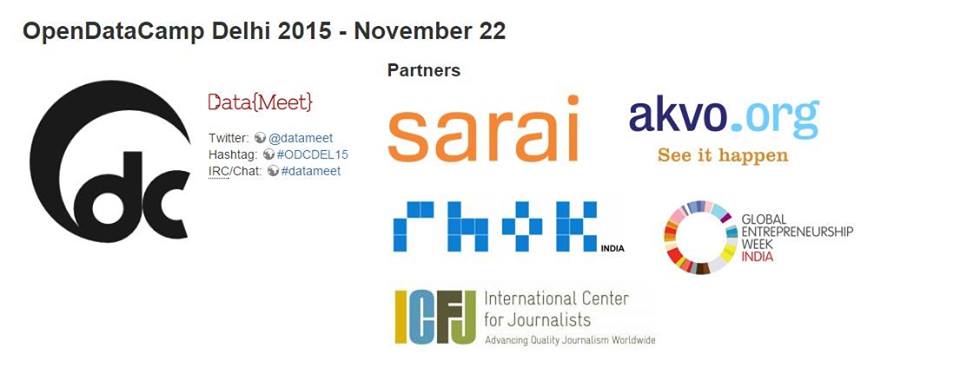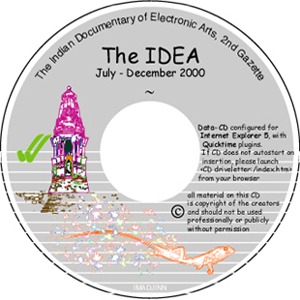Author: Sarai
-
OpenDataCamp Delhi – November 22
The Sarai Programme, CSDS will be hosting DataMeet’s OpenDataCamp Delhi, a one day un-conference, on Sunday, November 22, 2015. DataMeet organised the first OpenDataCamp in Delhi last year to create a discussion and sharing space for people involved in opening up and working with government and non-government data. This year’s Camp will focus on advancing these…
-
BioScope Volume 6 Number 1, January 2015
The January 2015 issue of BioScope: South Asian Screen Studies is now available both in print and online. The issue is entitled Transitions and Emergences: Language, Community and Nation in 1940s Cinema, and now Editorial Ravi S. Vasudevan, Rosie Thomas, Neepa Majumdar, and Moinak Biswas Articles The Eloquent Language: Hindustani in 1940s Indian Cinema…
-
‘The Question is Democracy’ – A Seminar in Honor of Rajni Kothari
For Rajni Kothari, one of the most influential political analysts of postcolonial India, the idea of democracy remained central to his intellectual concerns and to his political engagements as an intellectual-activist. He did not offer any fixed meaning of democracy and instead attempted to capture those context-specific ideas and practices, which are often described as democracy…
-
Social Media Research Workshop, November 06, 2015
Since March this year, short-term research fellows have been involved with The Sarai Programme, on themes that relate to digital and social media. On Friday, 6th November 2015, we are organising a workshop for the fellows to present and discuss their research with a select group of discussants. The workshop will be held at the Centre for the Study of Developing Societies, 29 Rajpur Road, Civil Lines.
-
Item Numbers in the Digital Age: From Cinema to a Landscape of Techno-Tactile Sensations
This is the fourth and final research note from Silpa Mukherjee, one of the short-term social media research fellows at The Sarai Programme.
In my introductory post I referred to the new phenomenon of online citation culture built around item numbers as the item number effect.[1] Amateur digital culture spawned by social networking and micro-blogging platforms, and online platforms that encourage user generated content build an archive of virtual signage associated with the item number that now bleeds out of cinema and becomes more than music. Here I signpost the registers of a new fan identity which often curiously blends with the star’s…
-
Objects as Exhibits: Performance of the Forensic
This is the fourth and final research note from Pallavi Paul, one of the short-term social media research fellows at The Sarai Programme.
“Things are what we encounter, ideas are what we project.” ~ Leo Stein (A-B-C of Aesthetics, p44)
In his work the The Theory of Things, Bill Brown asks us to turn our attention towards the distinction between ‘Objects’ and ‘Things’. The difference between the two Brown argues, lies in the threshold between the “nameable and unnameable, the figurable and unfigurable, the identifiable and unidentifiable[i].” In other words the relationship between the two is characterized by constant tension and possibility…
-
Media Encounters of the Nineties Romantic Song
This is the fourth and final research note from Abhija Ghosh, one of the short-term social media research fellows at The Sarai Programme.
“I’m a child of the nineties. An era when Rahul Roy was the country’s biggest superstar for a while…I’ve also lived through a time when the average person’s only contact with the outside universe was through newspapers, the radio and one channel on the telly- a channel that you couldn’t even watch unless you went to your balcony and repositioned its antenna every now and then.”[1]
-
Making a Classification Choice for the Internet: Between the Visible Car Parts and the Invisible Pizza Delivery
This is the fourth and final research note from Smarika Kumar, one of the short-term social media research fellows at The Sarai Programme.
In the last post, I discussed the role classification plays in locating the internet as a subject of law. I reflected on how two very different, yet competing identities: an identity upon function, and an identity upon means, have been framed for the internet in the debate around Voice over Internet Protocol (VoIP) regulation in India. Once these competing identities have been framed, the question that looms is how law negotiates between the two? This post attempts to reflect on this question.
-
Khabar Lahariya’s Online Foray: Successes and Failures
This is the fourth and final research note from Mrinalika Roy, one of the short-term social media research fellows at The Sarai Programme.
More and more NGOs are joining the online bandwagon. I have mentioned the pros and cons of NGOs going online and the organisations helping them in this endeavour, in my earlier posts. Here, I look at how far going online helped Khabar Lahariya and whether they have been able to realise all they set out to do.
-
Imago Aevitas: Forms of Web based Art Projects
This is the fourth and final research note from Charu Maithani, one of the short-term social media research fellows at The Sarai Programme. This post looks at the various forms of distribution of web based projects starting from 2000, mapping the changing methods of reaching out and interacting with the users.







